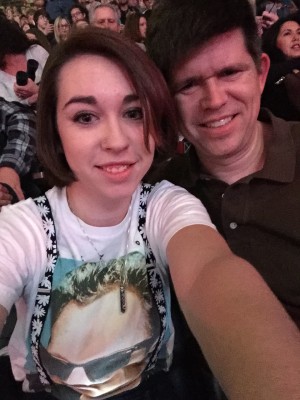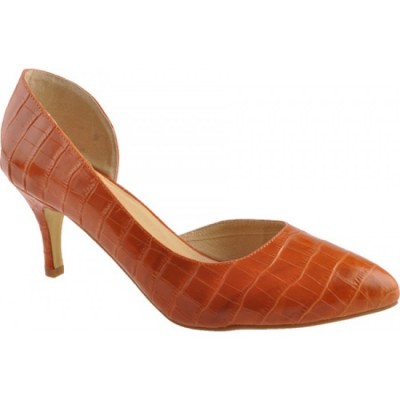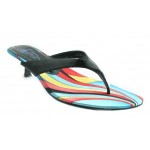Dear Shoe Lady,
My daughter Abby (in the attached picture with me) who is 17 YO, 6’1″, and wears a woman’s 14 or 15 depending on the maker has struggled finding shoes since she was 12. We are glad to have medical confirmation that the growth plates in her feet are fused so she won’t be growing more, but that’s not to say that pregnancy or life may not increase her foot size more. All that to say that she is intimately acquainted with the difficulties of finding shoes in her size (that weren’t made for cross dressers). We are of course aware of Barefoot Tess, Long Tall Sally, and other outlets for bigger shoes for women, but more often than not the shoes we order from their still don’t fit correctly. She is also blessed with very long toes.
We are considering buying a 3D laser cutter/engraver that would allow her to cut leather, cloth, rubber, cork, and wood among other materials, so she could design, cut, assemble and sell custom shoes for girls and women with size 12+ feet. (Statistically it appears that this is about 1.2% of the US women’s shoe market with shoes in Abby’s size be less than 0.1%.
We’d like to get your sense of the market and whether this really meets a need. We would be making an investment of about $8000 to get going.
What are your thoughts?
Thank you,
Jon DeM.
***********************
Dear Dad and Abby-
I have a LOT of thoughts on this!!! First. Shoe manufacturers are not very bright. Second, they depend solely on shoe retailers who are even less bright to make their decisions about the real market size for shoes. I have written extensively about the size issue. If the AVERAGE size for women’s shoes is now size 9, then 50% of all women wear size 9 or above. The likelihood that only 1.2% of American women wear size 12+ shoes is slim to none. That’s only 3 sizes above 9. Go 3 sizes below 9 and you are at size 6. Yet you will hardly find a store that carries shoes above size 10. And fewer than 1% of all the shoe manufacturers selling into the USA make shoes above size 10, and then, only to size 11. If you are defining the shoe market as what is manufactured, you are correct with your numbers. But the need for these larger sizes is substantial and unmet.
Making shoes is an incredibly complicated business. Not sure where you live but, if you are serious, I suggest Abby first take a course in shoe manufacturing. Look into the course offerings carefully. Here is a list of places. You also need to understand:
- the steps to make a shoe
- the 28 different “fit points” on a shoe
- how to measure and control for those fit points
- how to use different materials and manufacturing processes
- how to size for shoes above women’s size 12 (honest! Manufacturers neither know nor care, which is one reason why Abby’s shoes don’t always fit.)
You are not talking about a 3D laser printer. I believe you are talking about a 3D printer. These are available and designers are just beginning to do interesting footwear with them. But the resulting shoes are a very clearly 3D printed. They are not (yet) very versatile in shoe looks. I would suggest a course first.
When I founded and ran DesignerShoes.com, we had up to 1500 styles in size 12. I chased down and had made shoes up to size 15 so I know how to do it, know how complicated it is and know that the market is small. But the market is small not because the women aren’t there but rather because they have given up looking for shoes that fit. You are only likely to find them on line. And, then, only from the largest companies that can aggregate customers. I just checked Zappos’ listing for size 15 M women’s shoes. They sell only three brands: several Birkenstock sandals, one style of Bloch, and one style of Arcopedico. Barefoot Tess was acquired two years ago by Long Tall Sally. They mostly rely on individual vendors to know how to make a size 15 shoe… very risky. But they are beginning to make their own brand. They, today, offer 76 styles (excluding slippers and inserts) and 28 of these are “house branded”.
Abby, you are the woman of the future. At the rate of growth of women’s feet, you are likely to be on the large side for your lifetime, but 20 years ago size 7 was the average size. When Title XIX passed in the USA, women’s feet really started growing. In 20 more years, maybe the average size will be size 11. And MAYBE by then the shoe industry will start paying attention to the numbers.
In the meantime, you’ll need to live with the challenge of shoe shopping all your life. I suggest you invest in a course where you can learn how shoes are made and what is important about how they fit. Even if you were a size 9, having long toes means that you should be looking for a certain style of shoes and avoiding others. There is much to learn! If you want to go forward and manufacture shoes for this badly under served market, make the decision after you take the shoemaking course and after you’ve done some “due diligence” talking to people in the shoe industry… and The Shoe Lady!
Best to you both,
The Shoe Lady









